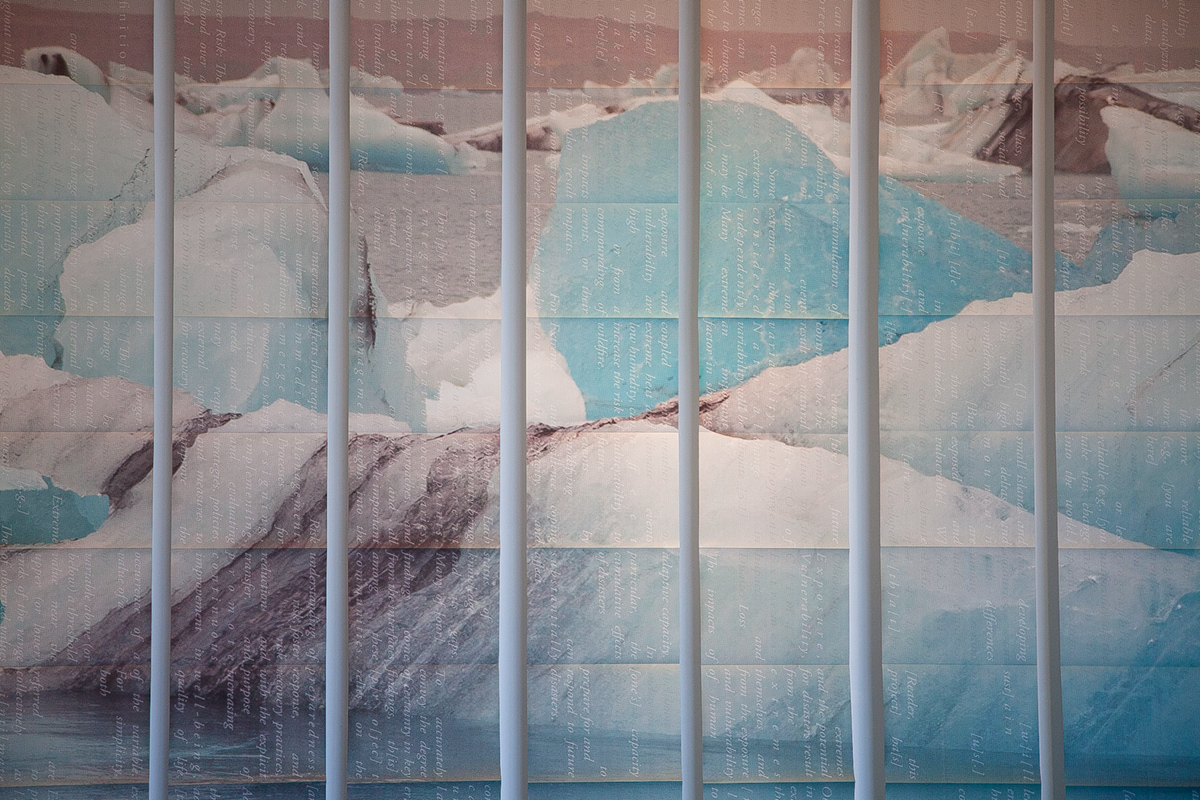I have been working on publishing 16 new volumes of City Shields that have been sitting on my desktop for too long. These volumes will be part of my residency and installation next March, 2017 at MING Studios. Many of these photographs were taken in 2012, when I travelled cross-country from my hometown in Canada back home to Utah.
In a day, I can prepare the photos of 2 volumes, bring them in different templates and copy and paste the information necessary for the index. So it should take me 8 to 10 days to complete the second phase. Printing will be next. I hate the printing phase, dealing with my printer these days demands too much patience to make it fun. I’m always happy to see the results when no problems arise from a finicky printer.
© 2016 Louise Levergneux, working in photoshop and InDesign with photo files and templates
From the start of this project, I kept in perspective the autobiographical theme of my artwork. It was important to trace my journey through life, where I was going, and where I travelled. Hence the insert included in the jewel case of each volume with an index showing the location of each manhole cover—plaque d’égout—photo is taken.
© 2016 Louise Levergneux, inside an insert of a Montréal, Québec volume
When a volume is purchased, the reader can walk or drive to the first manhole cover on the index and continue her/his travel following in my footsteps.
To keep this information, my husband, Michael has been the data record keeper since the beginning of City Shields. While I take photos in sometimes less desirable places—middle of a boulevard on a green light. Michael takes notes that will make it easy for me to copy the address or intersection where each manhole cover is located.
© 2006 Louise Levergneux, Michael writing data in Québec City
When I first started my project, cameras did not display date and time information. So I put together a booklet with numbers to keep track of the photos and their information written in the data journal.
© Louise Levergneux, booklet of numbers
© 2016 Louise Levergneux, data journal
The data journal is used to create the index for each volume. This little book can never be lost!! It caries precious details of the covers even drawings describing a particular manhole cover. I sometimes forget my booklet with numbers at home. This creates a big di·lem·ma! Sticky Notes are handy on these occasions, but often fly in the wind. They don’t stick to the pavement.
© 2013 Louise Levergneux, in Bozeman, Montana at W Grant St and S 7th Ave without my trusty book of numbers.
I have in the past returned to the scene of the crime to realize that an older cover was removed and paved over. Why? What's under a manhole cover? What happens to the vault/chamber under the cover? Is it filled in or just rendered obsolete?
Visit down a typical manhole in this video.
Older underground utility vaults/openings used to house access points for inspections, valve adjustments or performing maintenance may be removed because of newer technology. Since the 90's, there's been a big overhaul job on older water and sewage systems which were collapsing. As technology evolves and becomes part of every facet of our lives, the city replaces old manhole covers with more striking design covers.
Vancouver, British Columbia, Canada, held an “Art Underfoot” design competition back in 2004.
The elaborate designs are created by artists with a point of view on their environment. “Ironclad Art Challenge” was the newest competition in Vancouver.
Richmond, British Columbia, followed suit with Mayor Malcolm Brodie unveiling the winning manhole cover design last April at Richmond City Hall. The Cover Stories manhole cover art contest brought in 150 entries in 2014.
Last November, the City of Calgary launched a call to artists seeking professional artists to develop designs for new manhole covers as part of the manhole cover lifecycle replacement.
Minneapolis, New York, Seattle, Calgary, London, Tokyo, Hiroshima, and Kyoto have also turned streets into public art sites by the embellishment of manhole covers.
As I write this post, my obsession increases. My ambition is to travel and capture these wonderful manhole covers designed by artists.
I need to get back to work and start the next phase as planned.























































